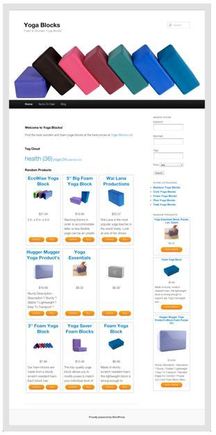A common error that merchants make when launching an affiliate program is not providing enough marketing support for their affiliates. Merchants sometimes assume that all they need to do is provide a few banner ads to their affiliates, who would place them on their sites.
But many savvy affiliate marketers are moving beyond banner ads. They have evolved their marketing efforts to drive conversions. This often includes contextual advertising, where affiliates work your products into the actual content of their sites.
Beyond Banner Ads
For example, some sites might embed affiliate links within product reviews. Or they might monetize user-generated content in an online forum with affiliate links. Other affiliates build product-focused sites that position your inventory in a slightly different way to attract a different consumer. An affiliate may build a site targeting fishing gear and equipment, and only promote the fishing-gear portion of your inventory. Both of these approaches — contextual links and product-focused sites — are effective at driving incremental value because they get your brand in front of consumers when they’re researching a purchase, or browsing for something specific.
Enter Product Data Feeds
To help affiliates with contextual links and product-focused sites, provide them with a product data feed. A data feed can be visualized as a spreadsheet of all your products, where each row represents a single product, and each column represents one characteristic of that product. Characteristics can include product name, landing page, price, image and source URL. If you use shopping comparison sites, you likely have a data feed that you could adapt to affiliate network needs.
Each affiliate network will have different data feed requirements in terms of which fields to include and what format to provide it in. Once you’ve formatted the data feed to meet the network specifications, you upload it into your affiliate account. The network will convert all your landing page URLs into affiliate tracking links, so that when affiliates access the data feed, they will pull down tracking links associated with each product.
Data feeds are also used to power merchandising tools used by affiliates. These tools enable affiliates to quickly build sites using those feeds. For example, Yoga-Blocks.co is an affiliate site using a WordPress template in combination with Datafeedr, which allows affiliates to build and embed storefronts from multiple product data feeds. Other, similar merchandising tools include GoldenCan, PopShops, and WebMerge.

Yoga-Blocks.co is an affiliate site using data feeds from 14 different retailers.
Creating Data Feeds
Eric Busch is co-founder of Datafeedr. He offers the following suggestions for creating data feeds.
- Check URL links. This includes the affiliate links as well as the image and thumbnail URLs. Too often affiliate links go to the merchant’s home page, to 404 pages, or to the wrong product pages. This decreases conversions for the affiliate.
- Provide two product images. If the affiliate network has fields for both large images and small thumbnails, use both of them for product images. When only one image is supplied, it’s often either too small for a shopper to see the product’s details, or it’s too large and takes too long to load.
- Keep prices up to date. This includes adding and updating sale prices when applicable. It’s much harder for an affiliate to promote products when they do not have accurate pricing information.
- Provide good product descriptions. Affiliate marketers don’t want to write the product descriptions. They want to use the merchants’ descriptions. Be sure to supply nicely formatted descriptions of each product in your data feed.
- Keep out-of-stock products out of the data feed. Only include products in the data feed that are actually in stock. It’s a waste of everyone’s time when a shopper clicks to buy an out-of-stock product.
- Keep duplicate products out of the data feed. Merchants typically provide a record for every size or color of a product that they have in stock. A shoe merchant will likely provide a product record for every size of a specific shoe. So instead of having just one record in the data feed for a pair of “Crocs,” there will be, say, ten records, one for each size. This drastically increases the size of the data feed, making it difficult to manipulate. It also forces the affiliate to manually parse the feed to remove the duplicate products.
- Use unique product IDs. Many affiliate marketers rely on unique product IDs to track a product from one data feed update to another — to perform database updates, add additional information, or filter specific products to their websites. If unique IDs are not provided, it’s nearly impossible to add value to, or extract value from, those products.
Provide Complete Data
Provide affiliates with as much data as possible. “Fill in as many fields of the data feed as possible,” Busch recommends. “It might take a little extra work, but the more comprehensively you’ve filled out the data feed, the more appealing your data feed will be to affiliate marketers.”
If you aren’t certain about what data to include or about proper formatting, ask your affiliate network support staff. Most networks are eager to assist in providing a data feed because those programs are likely to have better conversion rates and drive more revenue.
Last, but not least, update your data feed regularly. “Often we find data feeds that haven’t been updated in months, even years. There’s a good chance that data in those feeds is inaccurate,” Busch says. “It’s a risk for affiliate marketers to promote products in those feeds, as there’s a good chance the data is incorrect or, worse yet, the affiliate links don’t work.”





